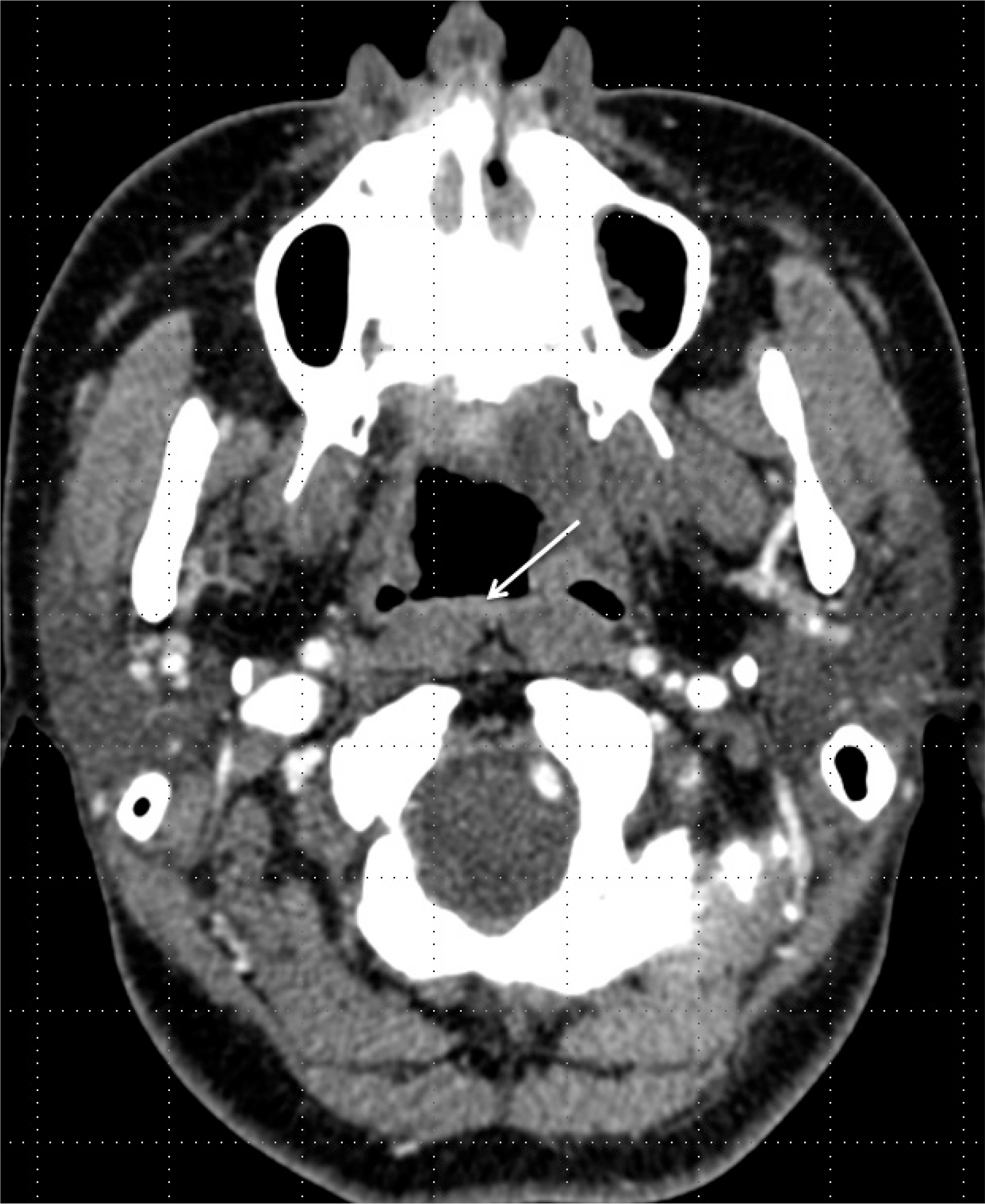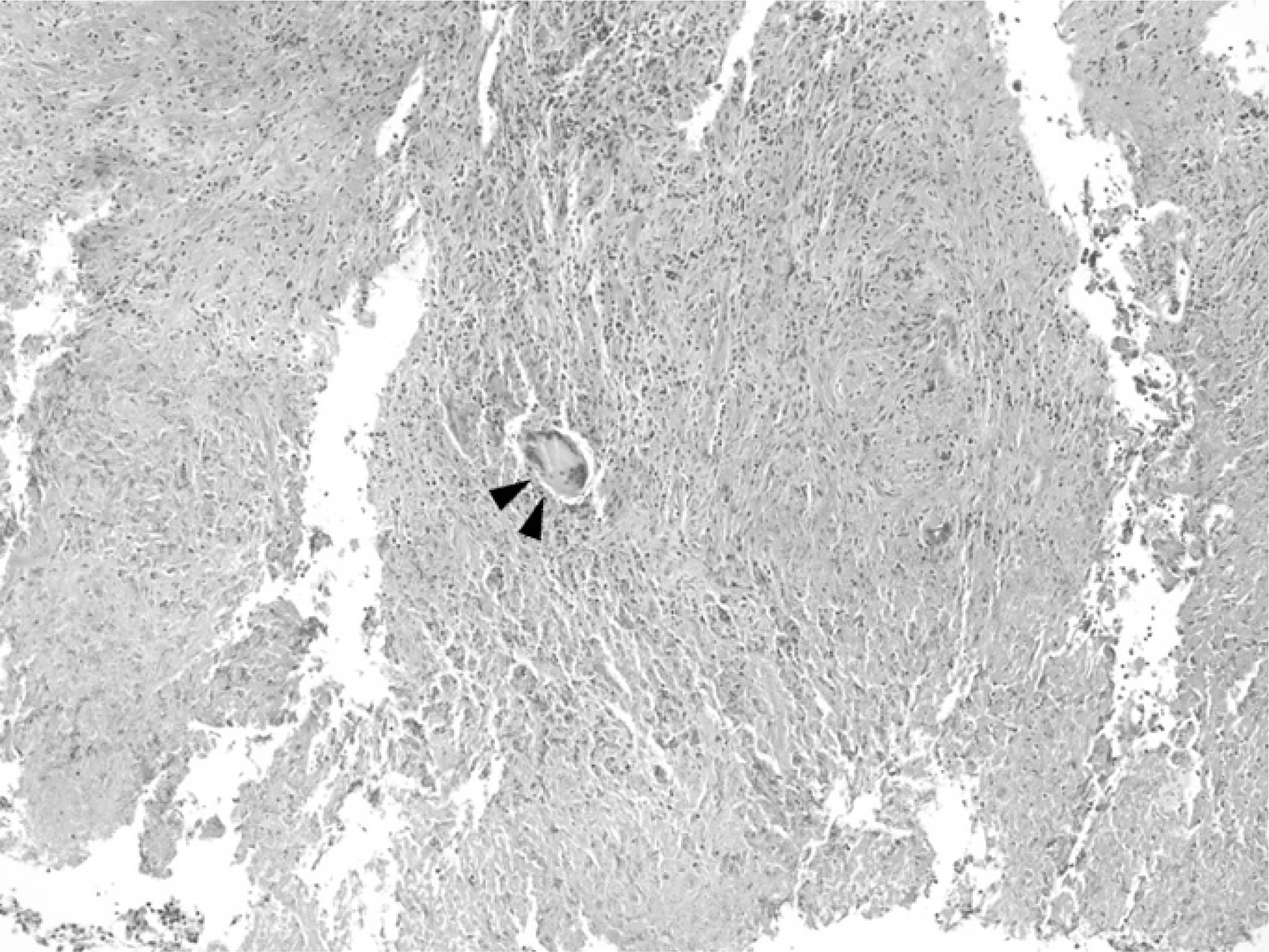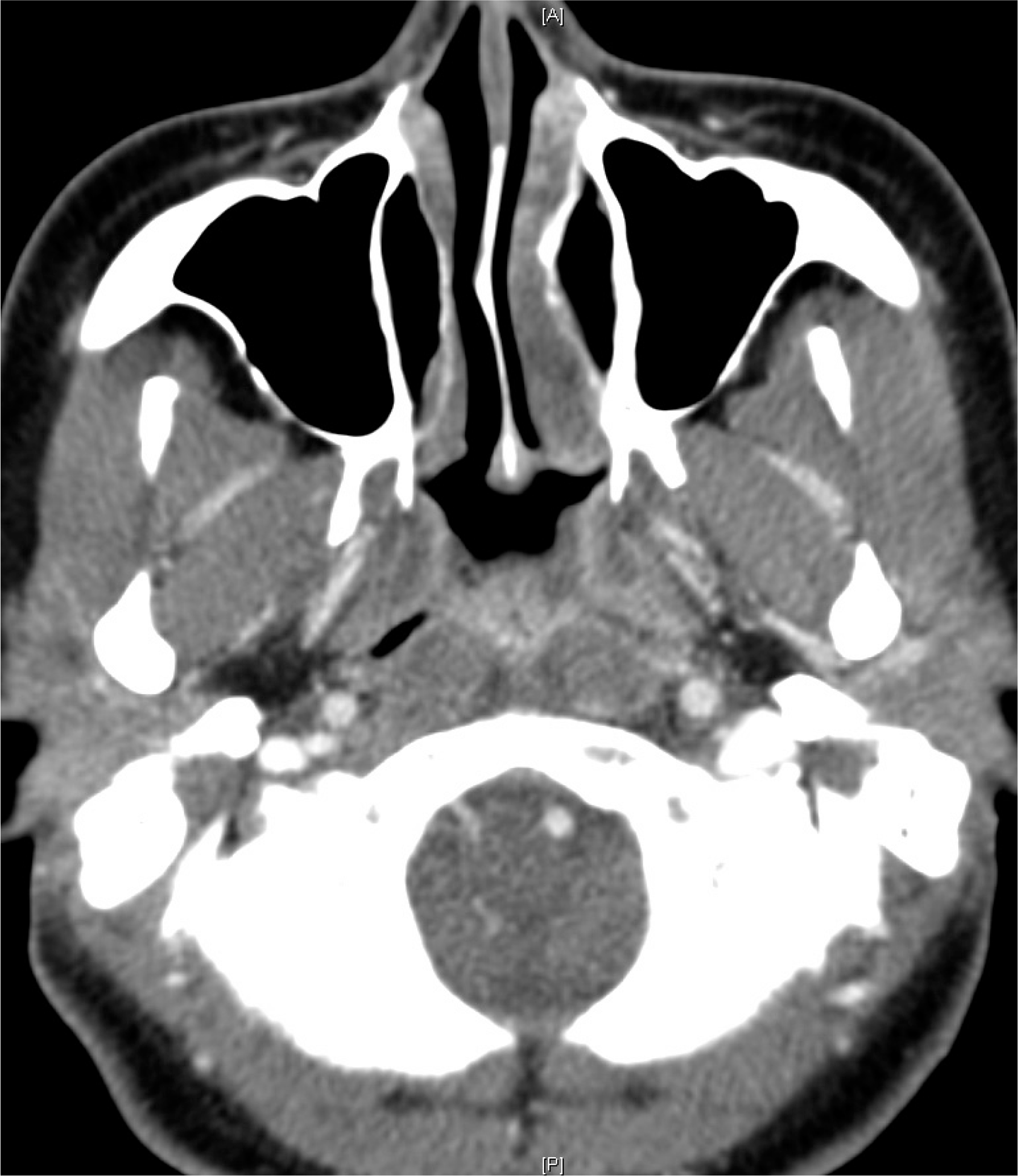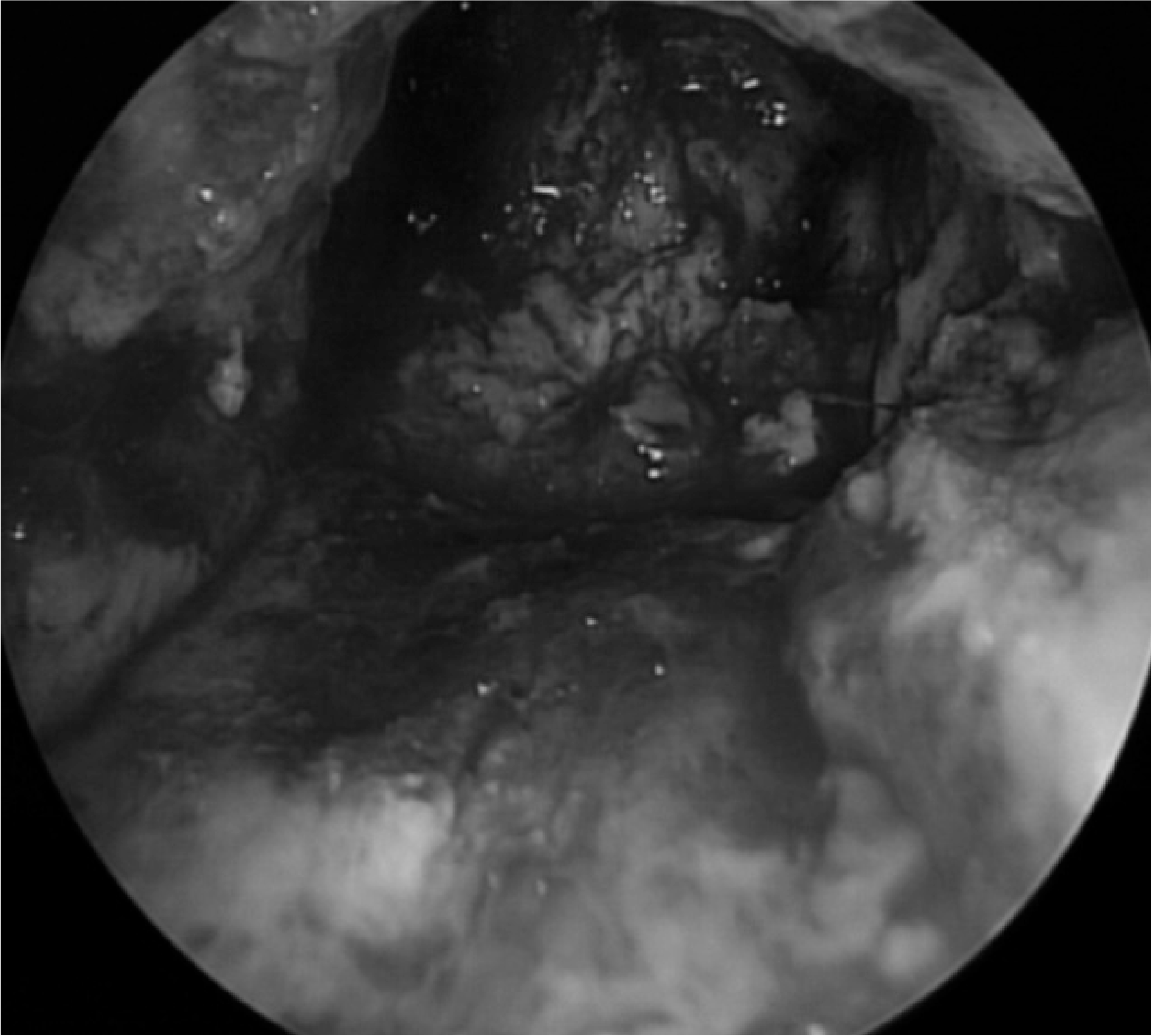Abstract
Upper airway tuberculosis usually develops as a secondary infection from pulmonary tuberculosis, and primary upper airway tuberculosis, especially in nasopharynx, is a rare disease.
The appropriate treatment for nasopharyngeal tuberculosis has been difficult because of complicated initial diagnosis and suspicion. Physicians should consider various granulomatous diseases in differential diagnosis. However, upper airway tuberculosis can be highly contagious, like pulmonary tuberculosis; therefore, early diagnosis and proper management are important. We recently experienced the successful early diagnosis and treatment of two cases of nasopharyngeal tuberculosis and report these cases with a review of the literature.
Go to : 
References
1). WHO. Global Report. Global tuberculosis control: surveillance, planning, financing. Geneva, Switzerland: WHO;2005.
3). Srirompotong S, Yimtae K, Jintakanon D. Nasopharyngeal tuberculosis: manifestations between 1991 and 2000. Otolaryngology–head and neck surgery: official journal of American Academy of Otolaryngology-Head and Neck Surgery. 2004; 131:762–4.

4). Kawamura I, Kudo T, Tsukahara M, Kurai H. Infection control for extrapulmonary tuberculosis at a tertiary care cancer center. American Journal of Infection Control. 2014; 42:1133–5.

5). Kim TH, Hong JW, Lee JH, Kim MG. A Case of Nasopharyngeal Tuberculosis Resulting in Tuberculous Otitis Media. Korean Journal of Otolaryngology-Head and Neck Surgery. 2009; 52:245.

6). Waldron J, Van Hasselt CA, Skinner DW, Arnold M. Tuberculosis of the nasopharynx: clinicopathological features. Clinical otolaryngology and allied sciences. 1992; 17:57–9.

7). August M, Dodson TB, Nastri A, Chuang SK. Nasopharyngeal carcinoma: clinical assessment and review of 176 cases. Oral surgery, oral medicine, oral pathology, oral radiology, and endodontics. 2001; 91:205–14.

8). Sharma SK, Mohan A. Extrapulmonary tuberculosis. The Indian Journal of Medical Research. 2004; 120:316–53.

10). Chan AB, Ma TK, Yu BK, King AD, Ho FN, Tse GM. Nasopharyngeal granulomatous inflammation and tuberculosis complicating undifferentiated carcinoma. Otolaryngology–head and neck surgery: Official Journal of American Academy of Otolaryngolo-gy-Head and Neck Surgery. 2004; 130:125–30.

11). Cai PQ, Li YZ, Zeng RF, Xu JH, Xie CM, Wu YP, et al. Nasopharyngeal tuberculosis: CT and MRI findings in thirty-six patients. European Journal of Radiology. 2013; 82:e448–54.

12). Starke JR. Interferon-gamma Release Assays for Diagnosis of Tuberculosis Infection and Disease in Children. Pediatrics. 2014.
13). Jensen PA, Lambert LA, Iademarco MF, Ridzon R. Guidelines for preventing the transmission of Mycobacterium tuberculosis in healthcare settings, 2005. MMWR Recomm Rep. 2005; 54:1–141.
Go to : 
 | Fig. 1.Initial 90° endoscopic finding demonstrated necrotic tissue (black arrow) with purulent discharge on left lateral and posterior wall of nasopharynx (A), and right anterior moderate tympanic menbrane perforation with otorrhea (B). Follow-up examinations which were performed 1month after surgery showed completely healed nasopharynx (C), and decreased otorrhea of right ear (D). |
 | Fig. 2.Preoperative computed tomography revealed poorly enhancing central soft tissue with peripheral rim enhancing lesion (white arrow) at the left lateral and posterior wall of nasopharynx. |
 | Fig. 3.Nasopharyngeal tissue shows the caseous necrosis (black arrow head) and granulomatous inflammation with inflammatory cell infiltration in this photomicrograph of surgical biopsy (H&E, ×100). |
 | Fi. 4.Initial 90o (A) and 30o (B) endoscopic finding demonstrated necrotic tissue (black arrow) and mucosal swelling with purulent discharge on nasopharynx wall entirely, Follow-up examinations which were performed 15 days after surgery showed partially improved of nasopharynx necrotic mucosa (C), and 1 month after surgery showed completely healed nasopharynx (D). |




 PDF
PDF ePub
ePub Citation
Citation Print
Print




 XML Download
XML Download